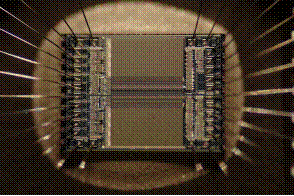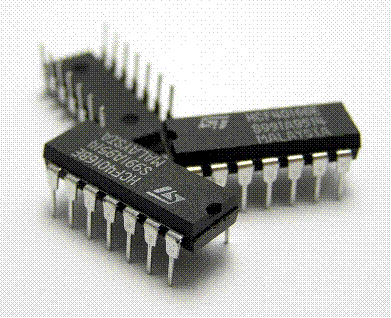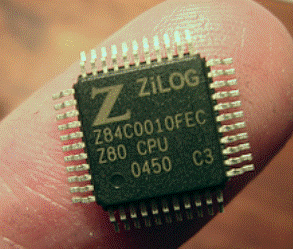The Encapsulation Story
Today, the encapsulation story. The University of Houston's College of Engineering presents this series about the machines that make our civilization run, and the people whose ingenuity created them.
Microchips, these tiny sized electronic devices that run our computers, phones, and iPods and perform many wonders for us, are actually vulnerable in their bare state. These chips contain many small intricate electrical circuits, micro to nanometer sized — that is, millionth to a billionth of a meter — very small, masterfully integrated and woven together.

These microchips can be damaged when they're exposed to air or moisture, or bumped and scraped or allowed to overheat. So, we first cover these bare chips with a thin coating, then we encapsulate and package them.

And this is how we protect ourselves with clothing. Think of Gene Kelly singing in the rain with his jacket, hat and umbrella. We see people in that scene walk through the pouring rain with all kinds of cover — even newspapers. Microchips also need protection — from dampness, mechanical loads and others.


As we package the microchip, we also consider electrical connections — often in the form of conductive bumps or metal strips, pins or wires. These electrical highways allow the microchip to communicate and interact with its outside world.
Today, more than 99 percent of our microchips are encapsulated in plastic. So, it may come as a surprise that plastic encapsulation was once unpopular. In 1960s, it was plagued by reliability and processing problems. Wires were damaged during encapsulation. Moisture got in and caused corrosion failures. The protective material separated from its neighboring layers or the package would crack.

In the movie scene, Gene Kelly's coat, hat and umbrella all seem to function well. Of course he's so engrossed with singing and dancing that his umbrella appears to be closed or swinging most of the time. But, microchips are less forgiving of environmental assault.
The plastic material that protects a microchip is usually a hard polymeric composite material. After the '60s, the military kept using ceramic packages with their rugged reliability for the next couple of decades. Plastic encapsulation kept improving and penetrating the commercial market. A widespread acceptance was finally achieved — even in military and aerospace applications.
Today, our encapsulated microchips have dramatically evolved in shape, form, and dimensions. Now, we can package single or stacked chips. We can mold a plastic package, or print it, or encapsulate the conductive bumps under the chip, all with precision and control.
And the next time we're texting or emailing, reading an electronic document, running computer simulations — OR watching Singing in the Rain — we may recall these tiny microchips with their protective vest, making all that possible for us.
I'm Haleh Ardebili at the University of Houston, where we're interested in the way inventive minds work.
Reference
Haleh Ardebili and Michael G. Pecht, Encapsulation Technologies for Electronic Applications, Elsevier, 2009.
All images are from Wikipedia.
This episode was first aired on July 11, 2012